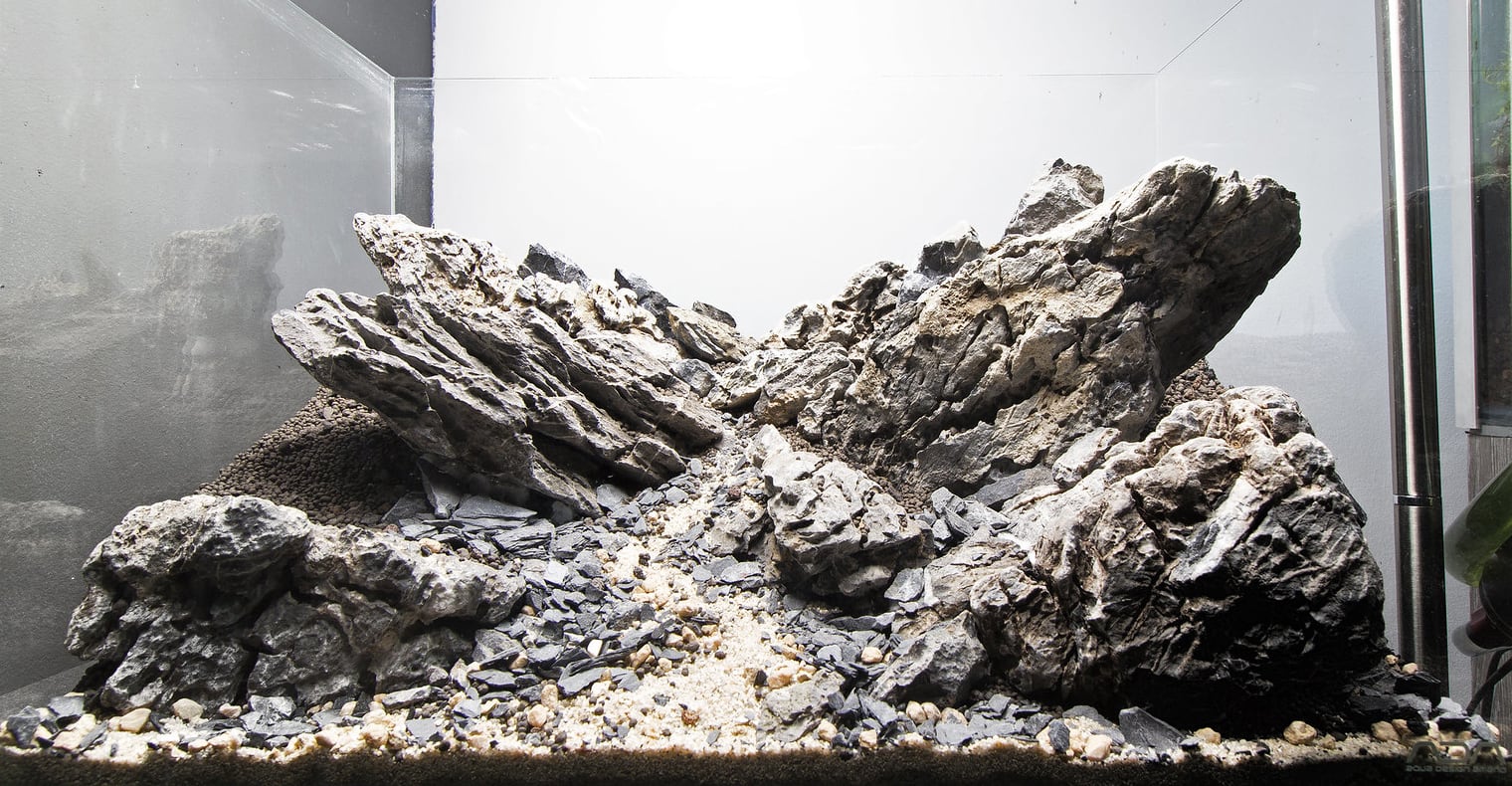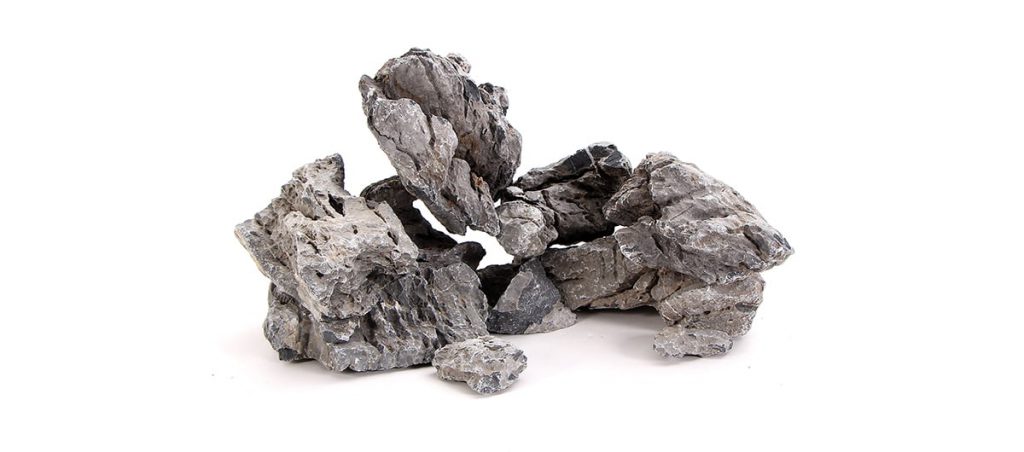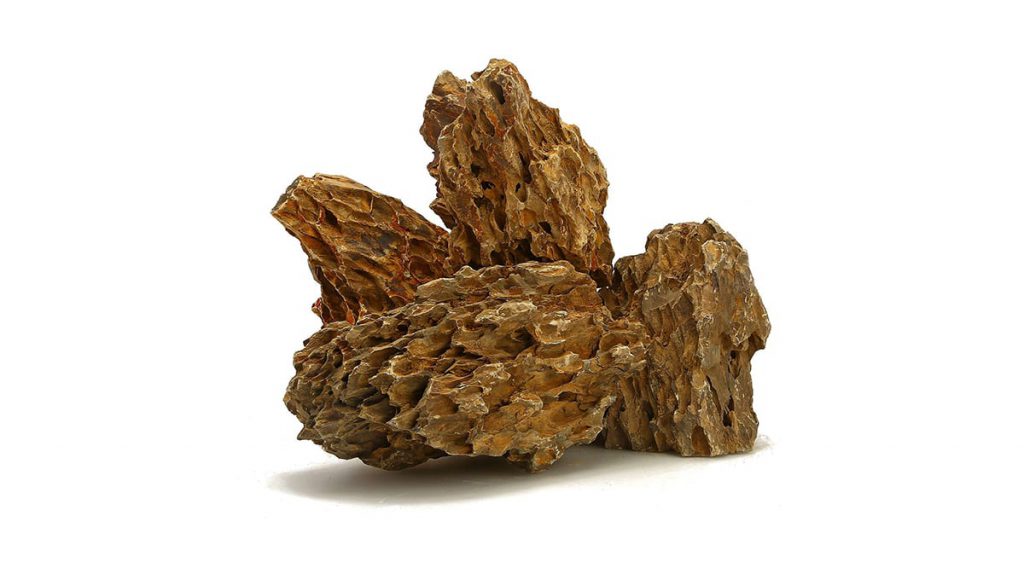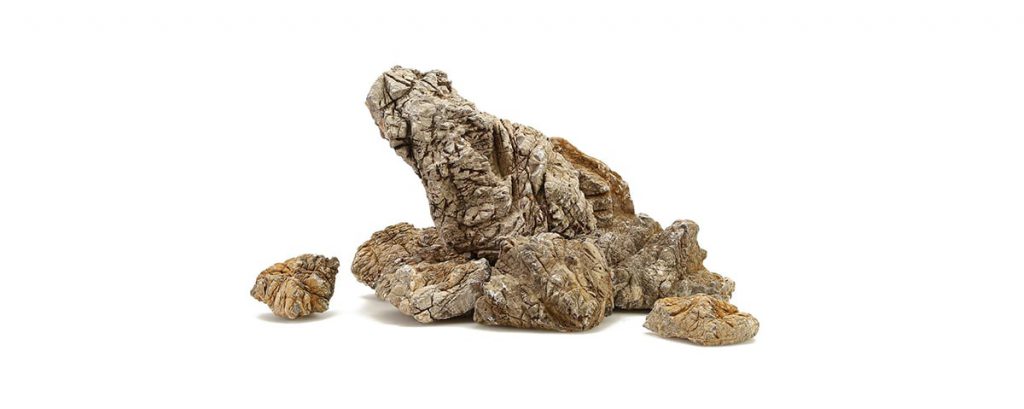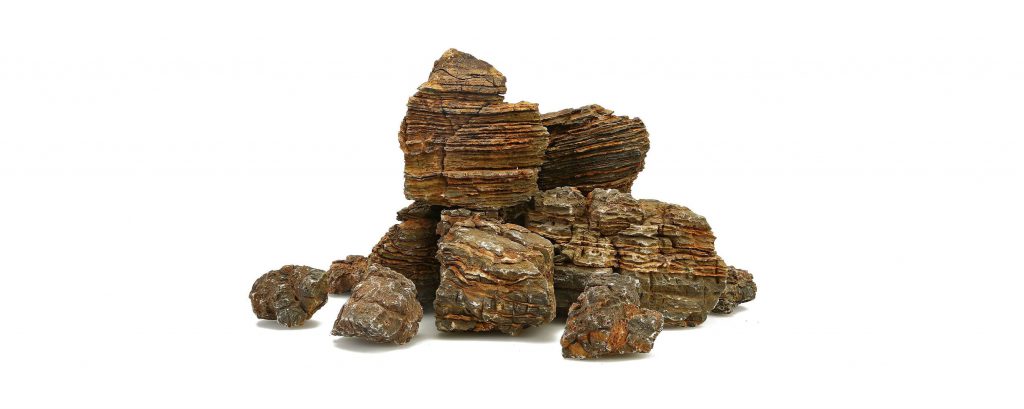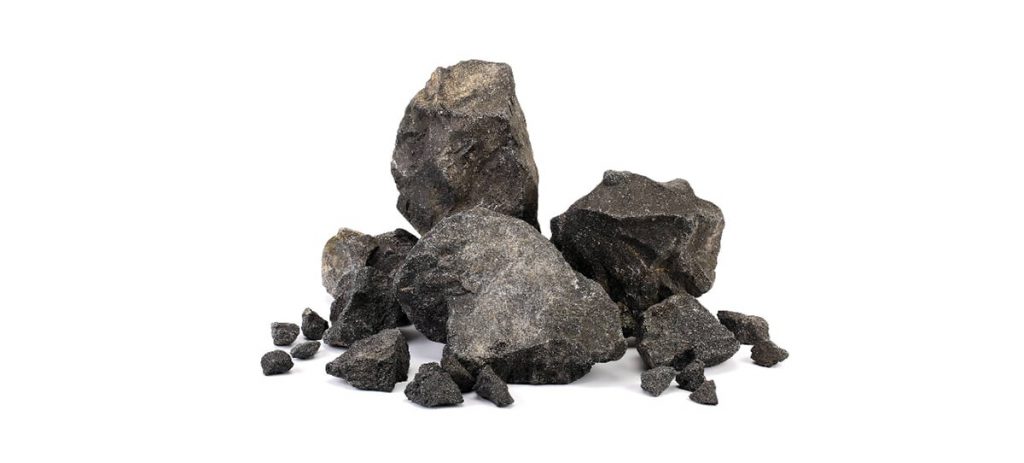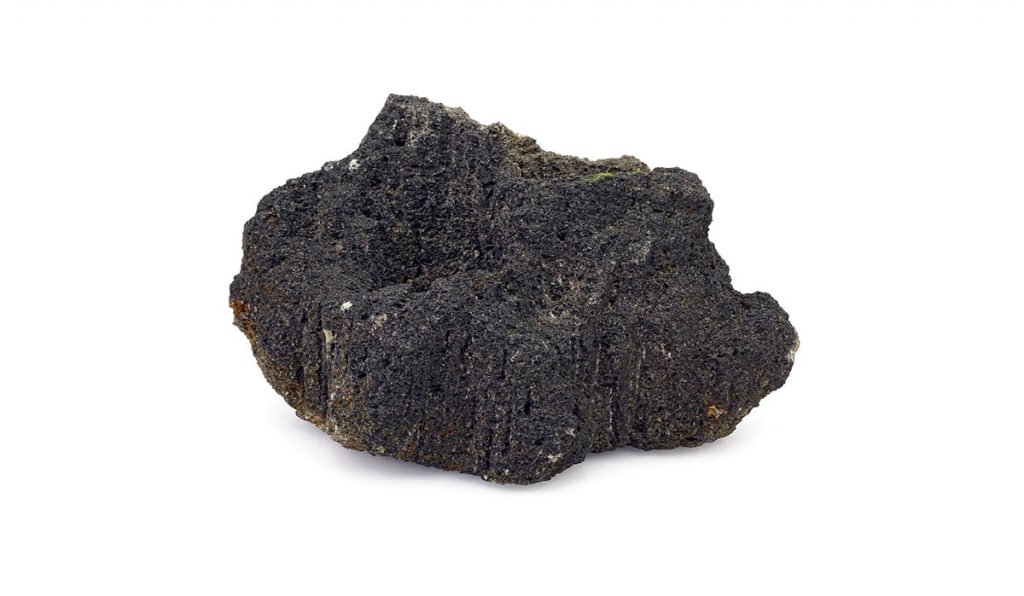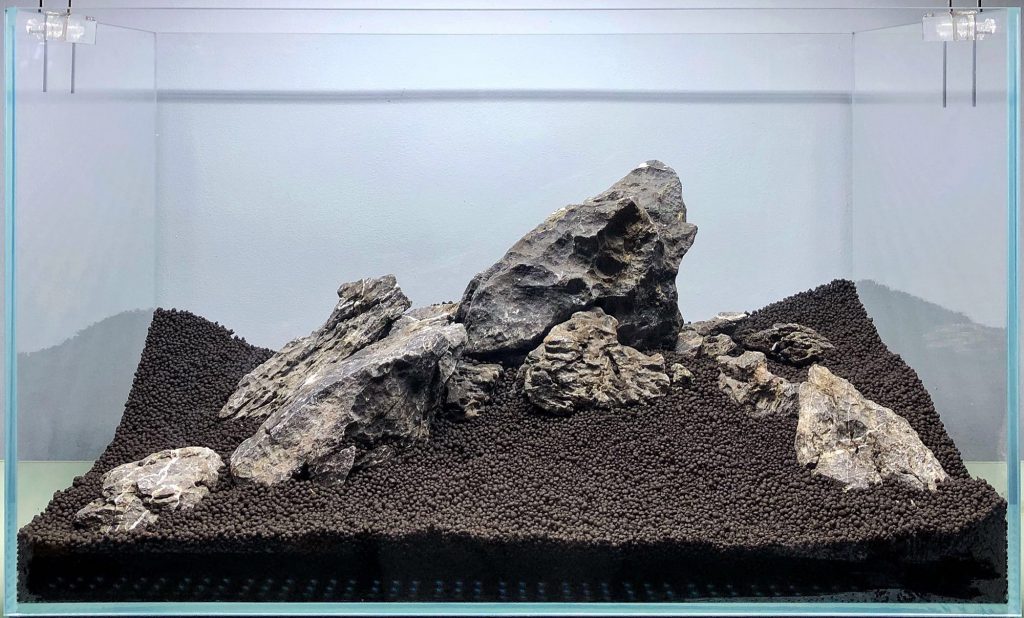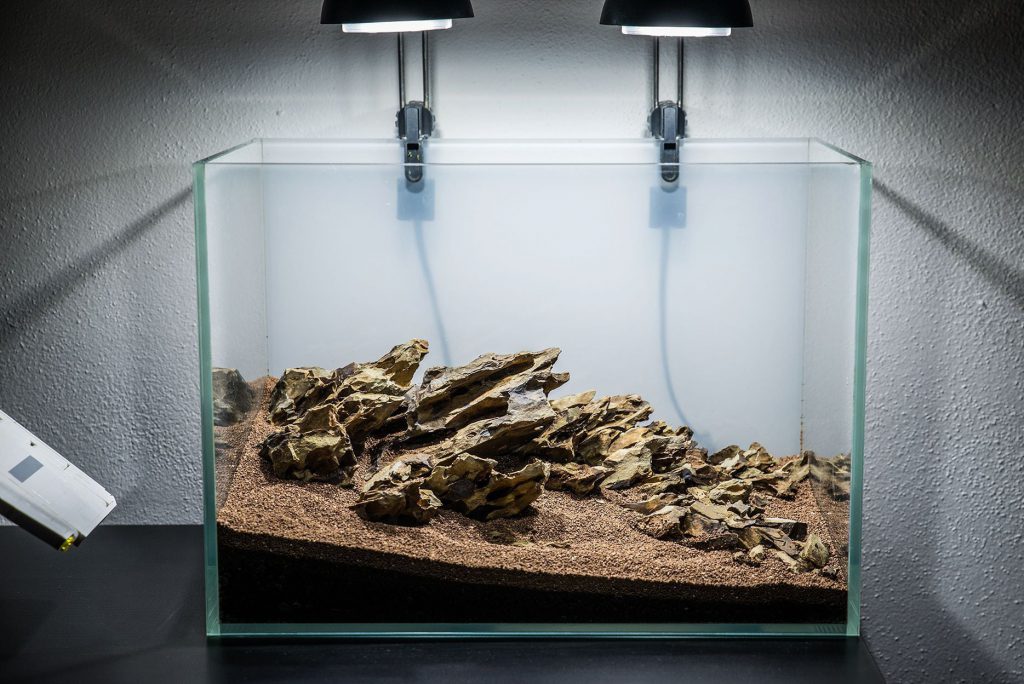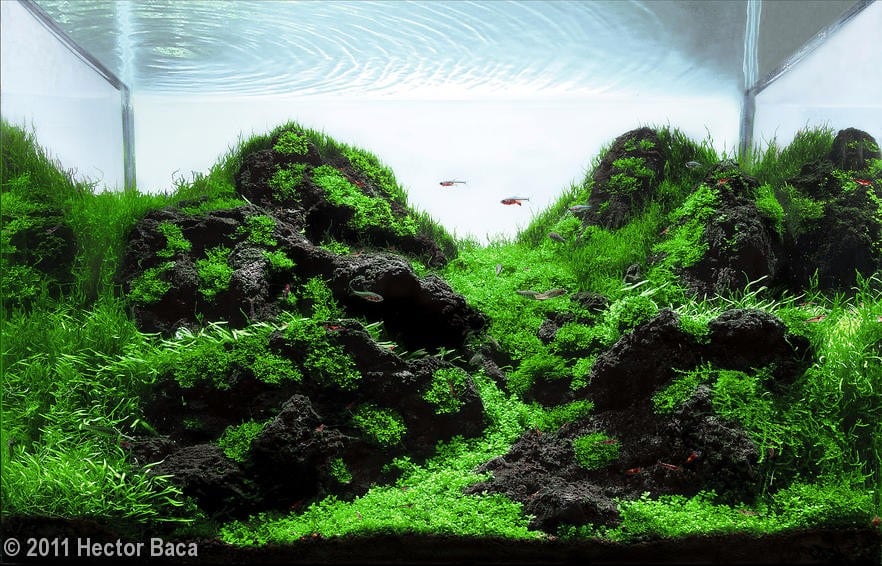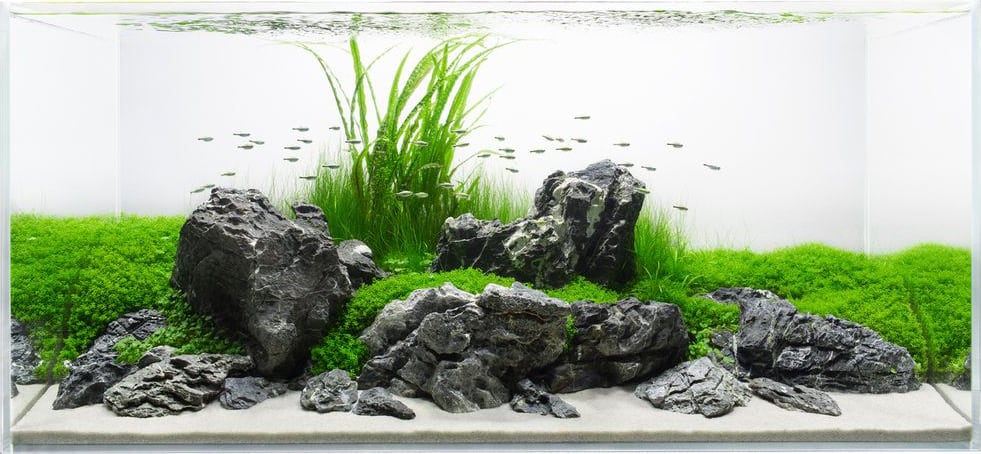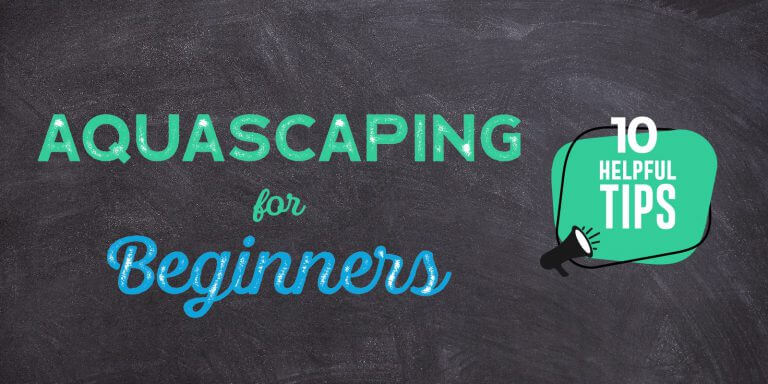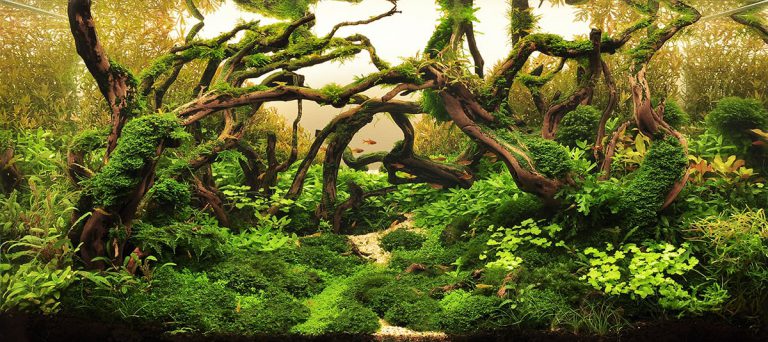This article is the second in our new series where we will look at the elements of hardscaping in an aquascape in greater detail. In part 2 we will look at types of aquascaping rocks commonly used nowadays, techniques using rocks to create aquascapes, and finally a look at the Iwagumi layout.
Aquascaping Rocks
If you were to think about building your own home you might have some wonderful ideas about how the final building will look, how it will feel, and maybe the look you want to achieve in your new home. One of the first aspects you will actually need to think about though, are the foundations.
However amazing the house above ground looks, if you have neglected the quality of the foundations, or built them in a rush and without due consideration, the house would not be complete; it may even fall down.
The same applies with aquascaping. The hardscaping performs as the ‘bones’ of your aquascape. Make sure you have thoroughly thought through where the hardscaping will stand, what it will stand in, and what it will support.
The Beauty of Aquascaping Rocks
Many cultures and traditions place special affinity on rocks. Consider Easter Island and Stonehenge for example. Many in the Japanese culture in particular will search for great lengths of time (think years!) to find that one special rock that brings a ‘meditative mountain’ into their garden.
Other rock styles that are desirable include ones that suggest water features, natural forms, and natural scenes. Texture and shape have a big part to play in the hunt for the perfect rock. Aesthetics are a large part of the choice you make when it comes to choosing a rock for your next aquascape.
Types of Aquascaping Rocks Commonly Used Today
Ryuoh or Seiryu Aquascaping Rocks
These uneven aquascaping rocks are perfect for using in an Iwagumi Layout. Their form makes placing them in larger groups a particularly attractive choice in a scene.
Their grey colour and form is reminiscent of huge and stunning natural rock formations and mountains; explaining why this rock form is so popular in aquascaping designs. The Ryuoh or Seiryu rocks are also known as Minilandschaft.
Ohko Aquascaping Rocks
This is an argillaceous rock and will not affect the water hardness in your aquarium. Its eye-catching form, warm earthen tones, natural look, and holey structure, make it an appealing choice for your aquascape. The Ohko rock is also known as the Dragon Stone.
Elephant Skin Aquascaping Rocks
These rocks do have a slight downside in that they can harden your aquarium’s water (the best way around this issue is to make regular and substantial water changes).
These rocks have very natural-looking outer textures and work well in many aquascaping scenes. If you are looking for a larger rock to use in your scene, this could be a very good choice. The Elephant Skin rock is also known as Seegebrige stones.
Black Pagoda Aquascaping Rocks
This stone can vary in colour from anthracite to brown and is a particularly aesthetically appealing stone. This rocks gets its name from its form. When you look at a larger piece, you will see different layers as you do in a pagoda building. This type of rock can slightly harden the water in your planted tank.
Manten Aquascaping Rocks
This is the ideal rock to use in an Iwagumi Layout. They have a number of properties that mean they can look like huge boulders when laid correctly. The Manten aquascaping rocks come in many different tones and have a rough exterior.
Koke Aquascaping Rocks
If you are looking for a rock that moss will easily attach to, and grow well on, then Koke rocks are the rocks for you. Ferns and Anubias are also well known to grow well on these rocks.
Koke aquascaping rocks are great if you are looking for a feature in your aquarium that compromises a selection of rocks as a group. These are volcanic rocks.
Unzan Aquascaping Rocks
For a natural mountain landscape in your aquascape, Unzan are the rock of choice. These lava aquascaping rocks are cut into mountain shapes and generally have planting pockets, which makes them perfect when you are creating a natural rock and plant scene.
The Iwagumi Layout
The term ‘Iwagumi’ refers to an aquascape that uses stones as the only hardscape material. Iwagumis are quite unlike other aquascape designs. Their beauty is captivating and mystical. The positioning is precise and it can take many, many attempts before perfection is met.
Iwagumi originally referred to a gardening style from Japan. In this style, the rocks are used to provide structure for the rest of the garden design.
The thought behind this is that if the stones are well laid out, then the rest of the garden will fall into place. The popularity of gardening within Japan grew and the concept of underwater gardening developed alongside.
Iwagumi traditions and concepts have transferred into aquascaping and many of today’s foremost aquascapers have been heavily influenced and inspired by the Iwagumi Layout style.
Iwagumi: The Individual Rocks
Each aquascaping rock in the Iwagumi Layout has a name and function. This is important to remember when you are selecting rocks for your next Iwagumi aquascape. It is the generally accepted practice that the same rock type is used throughout your Iwagumi aquascape.
Oyaishi – The Primary Stone
The Oyaishi stone should be the most beautiful and biggest stone from your collection. In an exact Iwagumi, the Oyashi’s height must be around two-thirds the height of the aquarium. This fits with the Rule of Two Thirds, which is so important in an aquascape.
It is also important that the primary stone is tilted. This is to show movement of water and to assist with a natural looking aquascape.
Fukuishi – The Secondary Stone
As its name suggests, the Fukuishi rock should be the second largest in your Iwagumi. It can be placed on either the right or the left of the primary stone. As mentioned above, it is important that the Fukuishi rock is of the same type of rock as the Oyaishi.
Soeishi – TheTertiary Stone
The purpose of this rock is to accentuate the presence of the Oyaishi rock.
Suteishi
This is a small stone that plays a supporting role in your Iwagumi aquascape. It can even be hidden over time by plants growing in your aquarium. If you are creating a Sanzon style Iwagumi, the Suteishi can be left out of the aquascape design.
How to Lay Out a Traditional Iwagumi Aquascape
- To your empty aquarium, add layer of substrate across the floor that is level. This does not represent the end level of substrate, as you will be adding more later on. For more intricate designs, the substrate layer can be raised at the back or the rear corners of the aquarium.
- Place the Oyaishi, baring the Rule of Two Thirds in mind. The ideal spot for the Oyaishi is for its tip to be at two thirds the height of the aquarium and the body of the rock to be at a point that is at two thirds of the width.
- Arrange the other rocks in the order as described above: Fukuseki, Soeishi, then Suteishi. The main area to pay particular attention to here is the angle that you place the rock at. Think about how the placement of one rock will interact with the other rocks and the illusion of the flow of water that you are attempting to create.
- Good advice here is to now leave the unfinished aquascape for a few days to consider the layout you have placed.
- Once you are happy with the layout, pour more of your substrate over the rocks and allow it to lie naturally. There will be slight peaks and troughs, but this will create the natural look that the Iwagumi style is famous for. To finish, add a layer of Aqua Soil Powder. Have a look at Part 1 of this series for a reminder about Aqua Soils.
Stone Numbers
Although we have talked about three stones, not all Iwagumi’s have just three; you can use any number. A ‘rule’ that is widely seen in (land) gardening that also applies in aquascaping is the ‘rule’ of planting in odd numbers.
Planting even numbers of plants and planting symmetrically give an unnatural look. It is the planting in odd numbers and at ‘third points’ that give an aquascape a natural beauty.
Planting in An Iwagumi Aquascape
A solely rock Iwagumi can look breathtaking and stunning. Some aquascapers, however, choose to add aquatic plants to soften the visual impact of the stones. This is so a harmonious balance can be achieved within the aquascape design.
Planting low growing plants in your aquascape next to or between rocks can really enhance the natural effect of your design. Low growing planting is essential here as you do not want foliage to obscure your Iwagumi rocks.
Suitable plants include:
- Eleocharis parvula, also known as hair grass
- Eleocharis acicularis
- Glossostigma elatinoides
While there are many recommendations and specific ways to lay out rocks in your aquarium, following these simple steps will help you to create a beautiful Iwagumi aquascape of your own.
Various ways in which rocks are used in aquascaping today:
Here’s a great video of how the professionals from ADA, led by Takashi Amano, put together an amazing Iwagumi Aquascape:
In Part 3 of our Planted Aquarium Hardscape Essentials series, we will be looking at drifwood and its use in aquascaping scenes.

